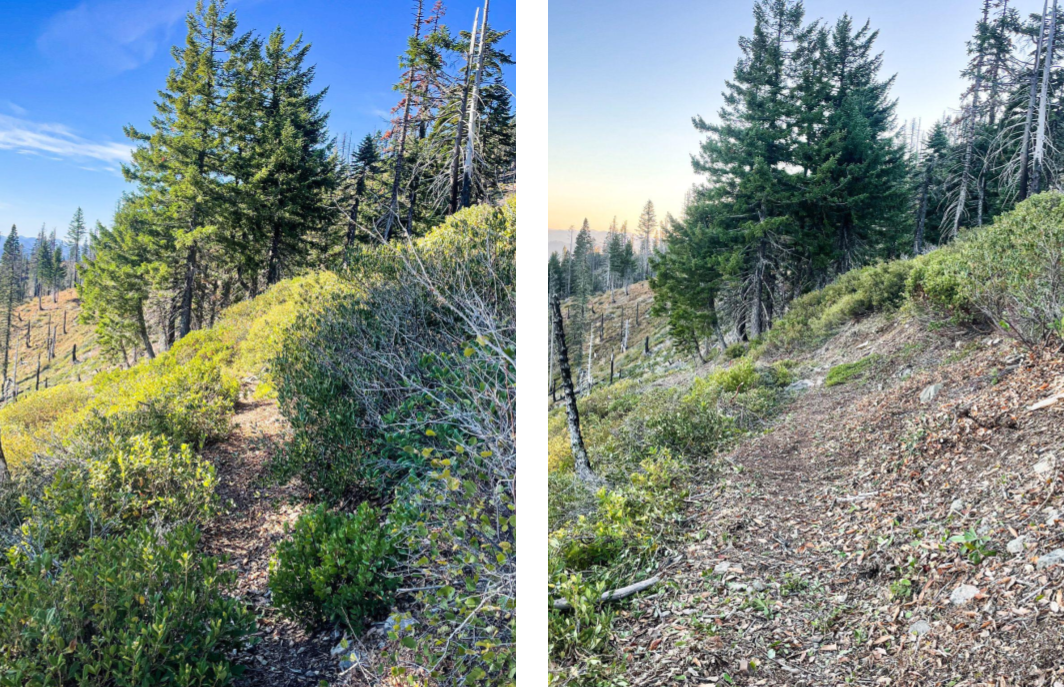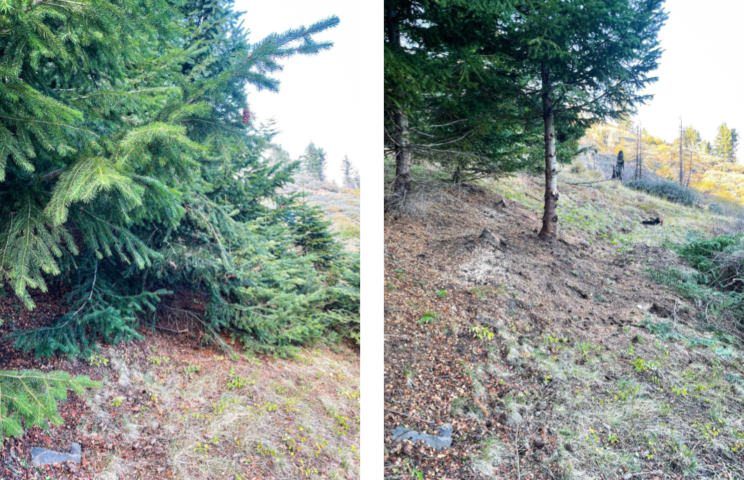23 NOVEMBER 2021 | GALICE, OR. — Trevor Meyer stares into a massive swath of untouched mountains that go as far as he can see, a STIHL chainsaw hanging over his shoulder. He’s spent the last two weeks on the Fish Hook Peak Trail with his work partner Nick Hodges.

![]()
“The trail was gone,” Meyer says, pointing to saplings that started growing straight from the tread around 20 years ago. This isn’t the first time Meyer, a program manager at the Club, has been tasked with bringing a dead trail back to life. He’s spent the last five seasons restoring trails through the Marble Mountain, Siskiyou, Kalmiopsis, Red Buttes, Wild Rogue, and Sky Lakes wilderness areas. But this trail is different.
“It’s not in Federal Wilderness,” says executive director Gabriel Howe. “So chainsaws and other mechanized equipment are a go.” It’s only a couple of miles, he adds, and says it would be a great hike for families. “The elevation profile is really moderate, and it leads to a summit with outstanding views.”
But trail crews hadn’t touched the trail for a couple of decades, indicated by the number of annual growth rings on those saplings Meyer cut from the middle of the trail bed. Unlike some of the more remote trails Howe clings to, this one is easy to get to just a few miles off the famed Bear Camp Road.
He says at the end of the day, it doesn’t cost as much to maintain trails that can be accessed so easily compared to projects where crews may have to hike a day or more to just to get to the project site. “The money is there,” he says. “The resources are available. It comes down to leadership.”
The Rogue-Siskiyou, which at 1.8 million acres reigns in as western Oregon’s largest National Forest, has been experiencing mega fires since 2002 when the Biscuit Fire burned half a million acres. Between that and dramatic budget cuts, trails started to disappear.

Howe started opening up trails in the Rogue-Siskiyou’s most remote trails over a decade ago, starting with a project on a complex of trails that traverse the heart of the infamous 180,000-acre Kalmiopsis Wilderness.

“Back then, we always kind of figured we’d work on the hard to reach stuff, and they’d keep up on the more popular and developed sites.”
He again approaches a large map on his office wall, listing off a growing number of sites and trails that are closed due to lack of maintenance.
“But that’s not how it played out.” Howe continues pointing to even more sites that he says are likely to be closed soon if they don’t get attention. “If the public wants to hold onto these places, they’d better speak out.” ###
Resources:

